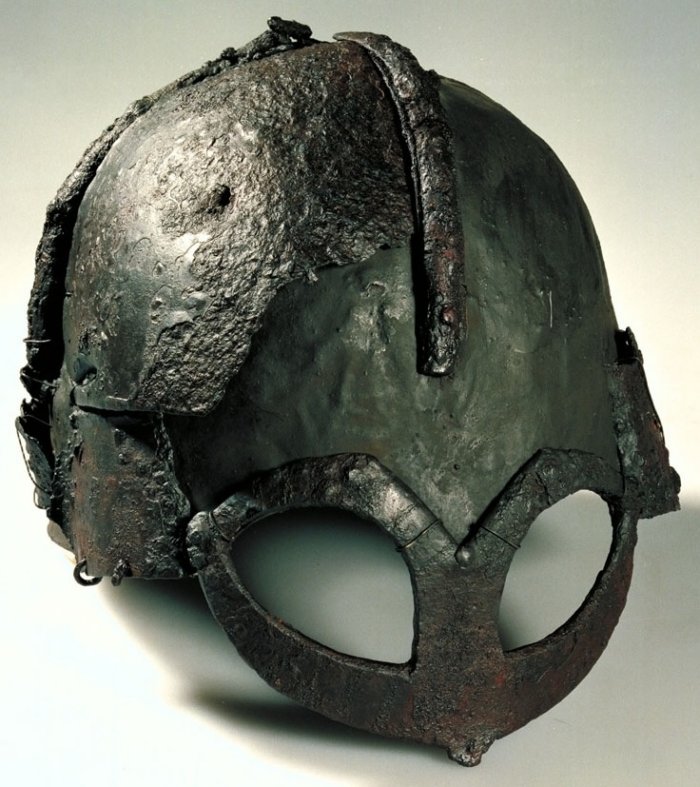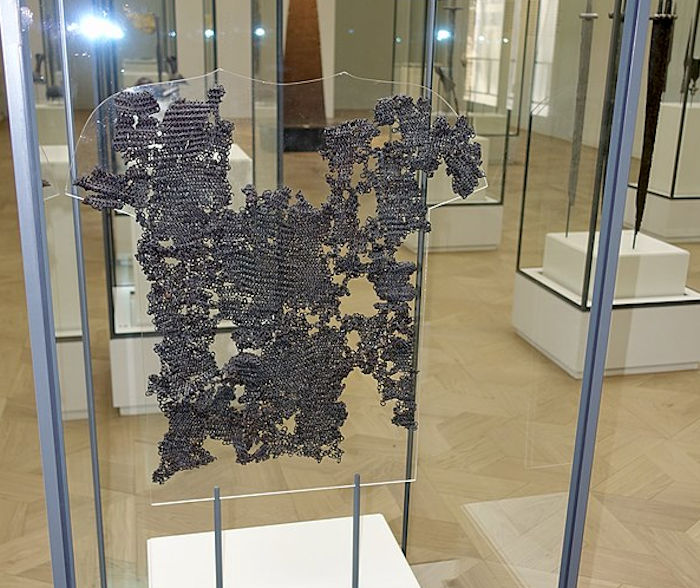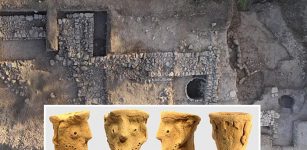Did The Unique Gjermundbu Viking Helmet Belong To A Warrior Who Served Rulers In The East?
Conny Waters – MessageToEagle.com – The Viking Gjermundbu helmet is one of the most valuable Viking Age artifacts ever discovered.
Over the years, archaeologists have discovered many precious Viking Age artifacts, such as remarkable Viking jewelry, weapons, ritual objects, pieces of clothes, and even ships, but Viking helmets are rarely encountered.
Who was the owner of the Gjermundbu helmet? Credit: Adobe Stock – Nomad Soul
One possible reason scientists do not come across Viking helmets is simply that Norse warriors did not wear iron helmets because they were too heavy. Scientists from Norway think only members of a Hird wore iron helmets. As previously discussed on Ancient Pages, members of a Hird were professional Viking warriors and bodyguards who protected their leader day and night.
Vikings who worked in a Hird were greatly rewarded for their services, and it’s possible they had access to the best military equipment.
“The Gjermundbu helmet was accidentally discovered on the farm Gjermundbu in Haugsbygd in Ringerike in 1943. When scientists examined the area, they found a burial chamber of historical value dating from the Viking era. Remains of two males were found along with other Viking artifacts such as two swords, two axes, two spearheads, board games, and an almost intact chain mail.
The Vikings who had been put to rest there were fully equipped to continue their afterlife in Valhalla, where Viking warriors dwell after death.”
Researchers have previously suggested the Gjermundbu helmet belonged to a powerful Viking chief, but a new study sheds more light on this Viking Age mystery.
In a study published in the Viking journal archaeologist Frans-Arne H. Stylegar and his colleague Ragnar Løken Børsheim reveal a new interpretation based on a re-examination of the ancient helmet.
Gjermundbu helmet – Credit: NTNU Vitenskapsmuseet – CC BY 2.0
In the study, researchers argue the Gjermundbu helmet may have belonged to a Norwegian warrior who served rulers in the East.
“Part of the reason for why the helmet and chain mail have been given so much attention is that this find is unique in Scandinavia and Western-Europe, Stylegar writes.
However, when people claim that this is Europe’s only Viking helmet, they fail to take into account the Eastern parts of Europe.
“Further East, in Kievan Rus, helmets and chain mails are characteristic items – if few in numbers – of rich male graves from the 900s,” Stylegar writes in a popular science article about the findings published on forskersonen.no (link in Norwegian).
Kievan Rus, known as Gardarike in the Norse sagas, was according to legend founded by Scandinavian Vikings in the 800s. At the height of its existence, the kingdom consisted of large parts of present-day Ukraine and large parts of Western Russia.
KIevan Rus, known as Gardariket in Norse, covered large parts of present-day Ukraine and Western Russia.
Some of the items found in Chernaya Mogila (Black grave) in Chernihiv, Ukraine, including one of the helmets. (Illustration: After Sedov 1982, LXXI)
“The graves where helmets and chain mails sometimes occur, are found in Russia and Ukraine,” Stylegar writes on forskersonen.no.
These are gravesites that are connected to the rulers of Kievan Rus and their closest companions, also known as druzhina. According to Stylegar, examples exist in graves from Gnezdovo near Smolensk and Jaroslavl, both in Russia, and in Chernihiv in Ukraine as well as in Ukraine’s capital Kiev,” Science in Norway reports.
Clues to this mystery may be found in the Gjermundbu where objects were placed under a large iron kettle.
According to Stylegar, the sledges found in the Viking grave have parallels in the East.
As Science in Norway writes, “They were known in Eastern Norway, and partly also in Eastern Sweden – but written sources also tell of the central role of sledges in burial rituals from Kievan Rus.
The Gjermundbu find is extraordinary, according to the archaeologist. It represents an expression of traditions that point to a continuity in former ways of manifesting power, at the same time as it displays connections to the more international phenomena of richly equipped equestrian warrior graves that are found all over Europe in areas where the Christian ways of laying people to rest were not yet dominant.
“In our case, this mix displays clear Eastern characteristics,” he writes.
“Certain features of the burial, such as the helmet, the chain mail and the sledge, suggest that those who organized this funeral may have themselves experienced how rulers in the East were buried.”
Though it is unlikely we will ever know who the great warrior, buried at Gjermundbu was, Stylegar has some interesting theories.
The Eastern characteristics of the burial must have come from somewhere, he writes. Stylegar believes he may have been a Norwegian Viking warrior who participated in the druzinha of the ruler of Kievan Rus.
Parts of costly chain mail shirt (in Norwegian: ringbrynje, brynje) from the Gjermundbu helmet. Credit: Wolfmann – CC BY-SA 4.0
“It was not unusual for Scandinavian warriors to join the armed guards of famous rulers at the time,” he writes.
“Written and archaeological sources talk about men who went to England or the distant Byzantium, while others went to the princes in Kiev or Novgorod.”
And it is in the part of Norway where the Gjermundbu farm is found that we find the clearest traces of Norwegian Vikings who went into service of the Kievan Rus’ Princes. The runic inscription of the Alstad stone at Toten for instance, remembers a person who died in Kievan Rus. Several other Norwegian warriors are known to have had positions in Kievan Rus under Vladimir the Great.
“The heavy horseriding equipment that we find at Gjermundbu, combined with the helmet, chain mail, bow and arrows and several swords, are like an echo of the Kiev Prince’s battles against various horse mounted nomads on the steppes in the South and the East,” Stylegar writes.
See also: More Archaeology News
“The person buried at Gjermundbu must have been a part of the tradition of traveling East. It is not unlikely that he had a leading role in this matter, perhaps he even organized it,” he suggests.
To state the identity of the long-gone warrior scientists would need a DNA sample or find items with organic material that could be used for isotopic analysis to trace an origin. However, it is impossible because the Gjermundbu grave was a cremation grave, making these kinds of examinations largely impossible.
Written by Conny Waters – MessageToEagle.com – AncientPages.com Staff Writer
Expand for references














